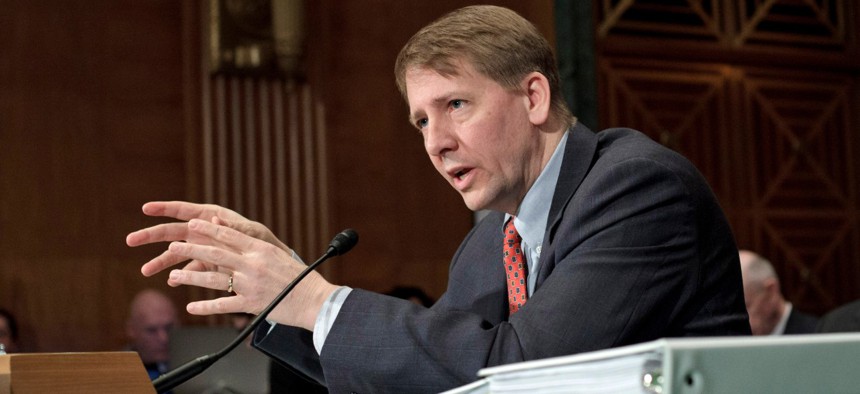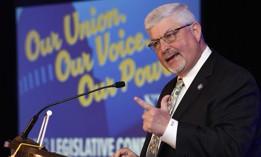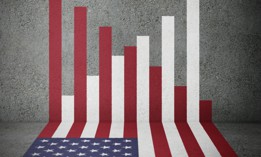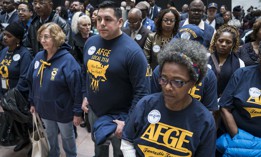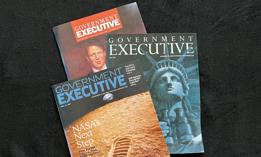Now the independence of the CFPB is under challenge in the Supreme Court. A law firm that we were investigating for possibly cheating its customers has mounted a challenge to block the investigation from proceeding. The Trump administration has sided with the law firm, contending that a government agency having a single director with some protection against removal by the president is a violation of our constitutional system of separation of powers.
Important cases about the structure of the federal government come along only from time to time. When they do, the politics of these cases can create strange bedfellows. So it was in this case, which produced several novelties: the Justice Department refusing to defend the lawfulness of an act of Congress, the agency charged with enforcing consumer-protection laws siding with a law firm accused of cheating its customers, and the House of Representatives but not the Senate being given time to present its views so the justices could canvass all the issues more fully.
As I sat in the courtroom and heard the abstract arguments the lawyers were making about the proper bounds between the legislative and executive branches of our government, my mind kept flashing back to more human moments from the unfolding of this constitutional drama. I thought about some of the tough enforcement actions we had taken, against companies such as Wells Fargo, for manipulating customer accounts to make employee bonuses and pump up the stock price. And our efforts over several years to draft new rules in order to safeguard the mortgage market against another meltdown that would jeopardize the financial future of millions of Americans. As that work was being called into question, I wondered about the practical consequences of this case for families that are cheated or mistreated every day in the financial marketplace.
But in the courtroom, those issues were only implicit. The case isn’t about what the government can do for consumers; rather, it presents a classic confrontation between Congress and the president about how much authority each can exert over the removal of high-ranking federal officials charged with administering and enforcing the law. It poses difficult questions because whereas the Constitution clearly and plainly states that the president has the power to appoint such officials (often with the advice and consent of the Senate), it is silent about who has the power to remove them.
The issue has reared its head periodically in American history, often in tense situations. When President William Henry Harrison died just a month after taking office, his Cabinet sought to impose on his successor, John Tyler (known as “His Accidency”), a rule that he would be bound by their majority decisions about policy. He rejected that proposal, and before long, almost all those Cabinet members resigned. After the Civil War, congressional Republicans did not trust President Andrew Johnson to keep the Cabinet officials appointed by President Abraham Lincoln or to carry out the policy of Reconstruction as they believed he should. So they passed the Tenure of Office Act, limiting the removal of certain key officials without the approval of the Senate. When President Johnson defied the law and claimed it was unconstitutional, he was impeached, and escaped conviction by only one vote in the Senate. The legality of the Tenure of Office Act was never settled in the courts, but the statute was later repealed.
Other more obscure situations have given rise to celebrated Supreme Court decisions. One involved the fate of a postmaster in Oregon—which led to a decision where Chief Justice William Howard Taft, himself a former President, proclaimed a doctrine of unilateral presidential control, unchecked by Congress, over the removal of executive officials for any reason, or no reason at all. Nine years later, another case involved a Federal Trade Commissioner who was fired by President Franklin Roosevelt and later passed away. His family sued for his back pay, contending that the firing was illegal because Congress had protected him from being removed unless dismissal was justified as being “for cause” (conduct more serious than mere policy disagreements). In that case, the Court reversed course and sided with Congress, holding that the president can be subject to modest restraints on his removal power where officials heading independent agencies exercise a broad mix of powers that seem in some ways to be executive, legislative, and judicial in character.
Thus, it appears to be settled that the president is in fact the one who exercises removal power over executive officials, yet it is also settled that this removal power can be conditioned in limited respects by Congress, as is the case with independent-agency heads, such as the director of the CFPB. Subsequent cases, including one authored by Chief Justice Rehnquist in 1988, have largely followed this approach by holding that Congress, when it sees fit, can impose modest restraints on the president’s removal of executive officials.
These precedents are close to a century old, but they remain controversial. Some conservatives passionately embrace the theory of the “unitary executive,” which holds that the president must be able to exercise or control all executive power with no constraints. In practice, this means that if the president cannot do the entire job of administering and enforcing the law—a self-evident proposition—then at least he or she can control other executive officials by replacing them at any time. The natural human assumption is that the person who can fire me from my job can more readily ensure my allegiance to do the job as they see fit. And for those officials in the executive branch under the president, Congress should have no right to interfere in this control over their actions.
But this legal theory, while perhaps logical in the abstract, runs up against potentially embarrassing real-life problems. For example, the Constitution only contemplates two essential executive-branch officials—the president and the vice president—and every other executive official only has authority and duties and responsibilities as prescribed by acts of Congress. When it was determined that the country needed to create a new Department of Homeland Security, for example, the president was not free to make those wholesale changes in the organization of the executive branch on his own, but instead had to get Congress to pass legislation to authorize it.
In a different vein, the perceived evils of the “spoils system” in the 19th century—whereby a new president could sweep out all executive-branch officials to make way for his own partisans—led to congressional limits on the president’s ability to fire most executive-branch officials solely on political grounds. These protections are the accepted principle of civil-service reform that has endured to this day. They are not consistent with an all-powerful executive who can control every rank of executive officials according to his or her whims.
Accordingly, a more practical view of the separation of powers has been to reject the idea that each branch exercises its own powers in its own hermetically sealed sphere. On the contrary, the Framers set up a system of checks and balances whereby each branch interacts closely with the others, and each has various means of asserting itself against the others, so that no single branch of the government can establish tyrannical powers to infringe on the liberties of the people. For instance, the president has the power to interfere with Congress by vetoing legislation. Congress has the power to limit the president by controlling the budget and thus the size, scope, and aspirations of the executive branch. The courts have the authority to review actions taken by Congress or the president and to invalidate those deemed to be illegal.
In the sphere of appointment and removal, likewise, the Constitution gives scope to some interplay between Congress and the President. Since Congress alone can authorize the accretion of additional executive-branch officials and condition their powers, it makes sense that it can, to some extent, condition the grounds of their removal from office as well. And, again, it has done so with the civil-service reform laws that offer considerable protection for the tenure of large numbers of executive-branch officials who can only be fired “for cause” of some kind.
Of course, the case currently before the Court involves a high-ranking official with much broader powers than an everyday bureaucrat. And as the justices mulled the arguments, they were pulled in different directions as they considered the effects that their decision could have. In particular, they wrestled with two tough hypotheticals. Leaning too much toward Congress could lead to resuscitating the discredited Tenure of Office Act by upholding removal restrictions even on key Cabinet officers (potentially requiring the next president to keep Attorney General Bill Barr or Secretary of State Mike Pompeo in place even beyond President Trump’s tenure). But leaning too far toward the president could lead to compromising the independence of such sacrosanct officials as the chair of the Federal Reserve, conferring the power to set interest rates and manipulate the economy for purely political purposes, not necessarily in the public interest. The justices seemed to almost visibly shy away from either of these extremes.
In the end, though the argument offered a muddle of different approaches, the Court is likely to issue a ruling that is fairly limited as a practical matter. A bare majority of the Court may hold that the president can remove a single director of an agency at will and cannot be limited by the “for cause” removal provision imposed by Congress. But there were other indications that the Court’s decision would embrace the big picture by allowing the CFPB to continue to operate and to protect consumers, as Congress intended. As Justice Ruth Bader Ginsburg reminded everyone at the argument, while both Congress and the president had their lawyers arguing before the bench, it is important to remember that consumers—that is, all of us—have weighty issues at stake in this case too.
